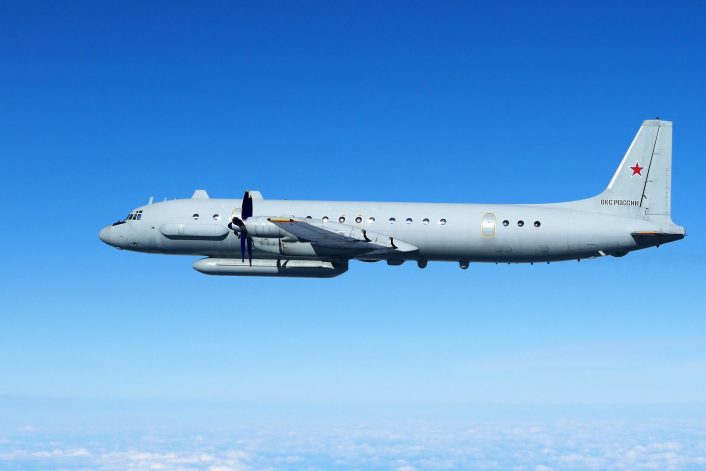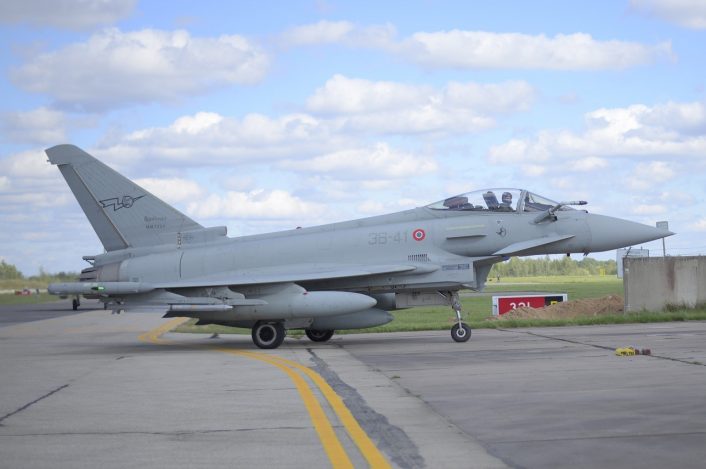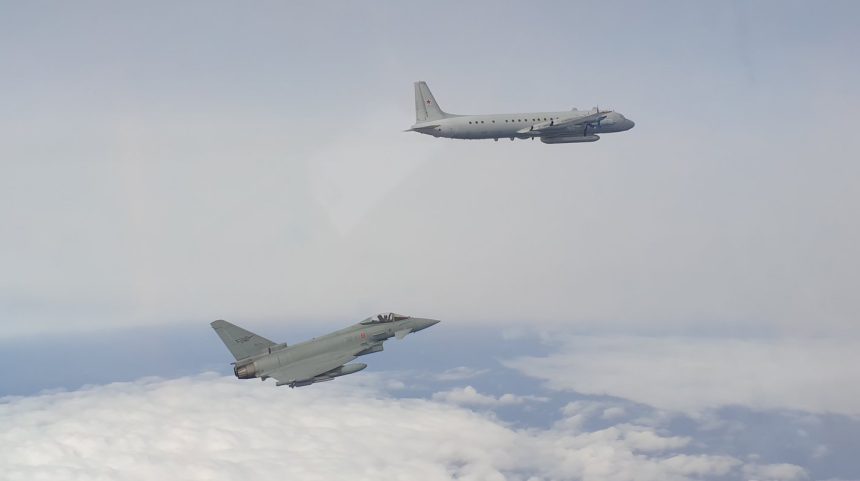Unlike what has happened in the past, the Italian MOD this time has released a photograph of the intercept.
The Italian Air Force F-2000, currently deployed to Šiauliai, Lithunia, to support NATO Baltic Air Policing mission, have carried out the first alert scramble: the Italian Typhoons were launched to identify a Russian Il-20M “Coot-A” aircraft on Sept. 11, 2020.
While these missions occur quite frequently in the Baltic region, it’s worth of remark that the Italian MOD (Ministry Of Defense), unlike what has happened in all the previous BAP rotations carried out by the Italian Air Force jets, this time has released an image of the Russian aircraft that caused the activation of the QRA (Quick Reaction Alert) cell.
Scramble!
I piloti dell’ #AeronauticaMilitare della Task Force Air Šiauliai della missione #NATO Baltic #AirPolicing in Lituania
hanno ricevuto un ordine di decollo immediato per intercettare un velivolo non identificato@ItalianAirForce #Eurofighter#ForzeArmate 🇮🇹 #WeAreNATO pic.twitter.com/hRLbKpTYcX
— Forze Armate StatoMaggioreDifesa (@SM_Difesa) September 12, 2020
The “zombie” (as an unidentified aircraft that triggers a QRA launch is called in the interceptors lingo), is particularly interesting. The Il-20M is an ELINT (Electronic Intelligence) platform: it is equipped with a wide array of antennas, IR (Infrared) and Optical sensors, a SLAR (Side-Looking Airborne Radar) and satellite communication equipment for real-time data sharing. It can be used for intelligence gathering missions, eavesdropping the communications, detecting ground, maritime and aerial systems’ emissions and pinpointing their positions to build an Electronic Order of Battle of the NATO assets in the region.

As often reported here at The Aviationist, the Russian Il-20s regularly perform long-range reconnaissance missions in the Baltic region, flying in international airspace with their transponder turned off; a standard practice for almost all ISR (Intelligence Surveillance Reconnaissance) aircraft. The missions of the Russian spyplane close to the NATO airspace in the Baltic region have also caused some concern in the past. In 2014, Russian Coot spyplanes flying close to civilian airports or congested airways were involved in two “air proximity” incidents: in March 2014, a SAS Boeing 737 with 132 people almost collided with an Il-20 Coot, about 50 miles to the southwest of Malmö, Sweden; in December 2014, a Canadair CRJ-200 from Cimber Airlines was involved in a near collision with an Il-20 halfway between Ystad, Sweden and Sassnitz, Germany.
Since Sept. 1, 2020, the Italian Air Force has taken the lead of the NATO BAP mission. On Sept. 8, the Task Force Air “Baltic Thunder” and its four 4x F-2000A Typhoons, belonging to the 4°, 36° and 37° Stormo (Wing), have achieved the FOC (Full Operational Capability), providing H24 QRA duties in the Baltic. Also deployed in the region, as “augmentees” supporting the BAP mission from Amari, Estonia, are the German Air Force Eurofighters. The German detachment carried out its first scramble of the current rotation on Sept. 10, 2020, to intercept an Il-20M (perhaps, the same aircraft intercepted also by the Italians).










